Genealogist and blogger Lisa Lisson of Are You My Cousin? shares her expertise when it comes to dating and identifying your old family photographs in your collection.
When cleaning out a relative’s home, you find a long-forgotten shoebox full of photographs stuffed in the back of a closet. The photographs are all sizes. Some are obviously older photographs.
But….
Not one photograph is labeled!
Now what?
Who are the individuals in the photographs? Are the individuals family members? Most likely, but if not, the photograph was obviously treasured to have been kept throughout the years.
Identifying individuals in the photographs is possible.
How do you get started?
Know What You Already Know
Who owned the photograph(s) before you? How did the photograph(s) come into your possession? The answers to these questions can narrow down which side of the family the photograph(s) belonged.
Pursue your family’s oral history. If a relative is still living, check with him/her. Don’t worry about how far away they are. Email and social media make it easier to contact more distant relatives. Reach out to those distant cousins.
Skipping this step is tempting, but avoid that temptation! You may miss valuable information including the identity of the photograph’s individuals. Other family members may provide a date and/or the circumstances of when the photograph was taken.
For example, if the photograph in your possession was in the back of your maternal grandmother’s closet, start with her family members first. Could the photograph(s) be of her sisters, parents, or cousins? Check with your cousins, aunts, uncles….
You may not have much oral history in your family or a large extended family to ask. That’s perfectly okay. You can still have options for determining the date or age of a photograph. Characteristics of the photograph itself provide clues to its age.
[bctt tweet=”What to do when you don’t know who that ancestor is in your old photo @areyoumycousin ” username=”photoorganizers”]
Type of Photograph
The type of photograph can place your photograph in a specific time period. If you know the time period a photograph was taken, you can narrow down possible candidates on your family tree.
The Daguerreotype – 1840-1860
Daguerreotypes are typically small with the most common size being 2 3/4 x 3 1/2 inches and housed in a case. The photographic process makes the photographs appear to float. Daguerreotypes are very fragile and if you have one among your family’s photos, be sure to store these away from light and extreme temperatures.
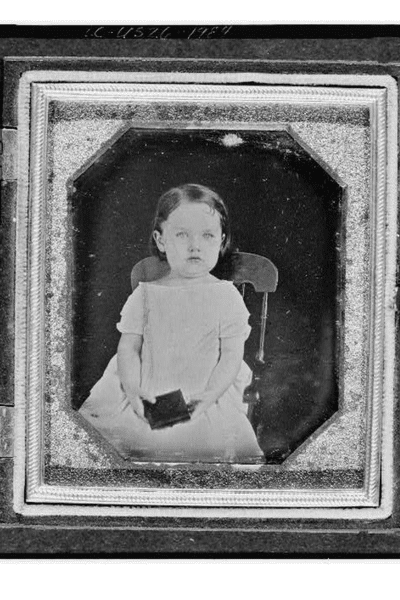
Source: Library of Congress
The Ambrotype – 1854-1868
Like the daguerreotypes, ambrotypes are in small hinged cases. The difference is the ambrotype does not have that reflective “floating” type quality.
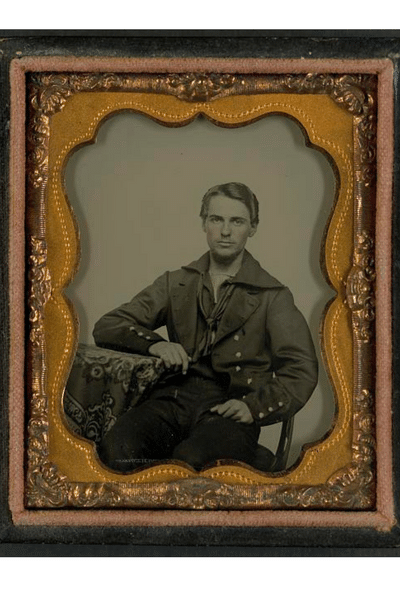
Source: Library of Congress
The Tintype – 1856-1878
Tintypes were popular for more than 30 years. Instead of glass, the image was on an iron plate. Early tintypes were in small, hinged cases like the daguerreotypes and the ambrotypes. However, the cases were soon replaced by paper sleeves. Often today, tintypes are found in one’s collection without the sleeves.
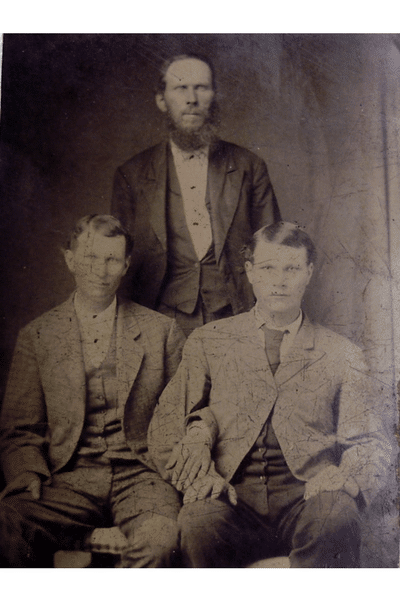
Source: Personal Collection of Lisa Lisson
The Carte de Visite – 1859-1889
Carte des Visites (CDV) were introduced in 1859. Measuring 2 1/2″ by 4″, the photographs were mounted on a thick paper and used much as the calling card was used in the 1850s. The carte de visite gained popularity quickly during the Civil War as soldiers and family exchanged photographs.
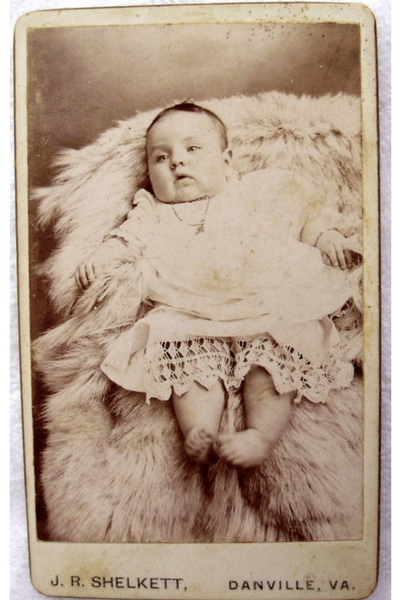
Source: Personal Collection of Lisa Lisson
The Cabinet Cards – 1866-1903
Cabinet cards and carte des visites (CDV) are often confused. Like the CDV, the cabinet card was also an albumen print on thin paper and mounted on thicker paper. The primary difference is the size. The cabinet card is larger and may have a photographer’s logo on the reverse side. The cabinet card reached its peak popularity in the 1880s but was used into the early 1900s.
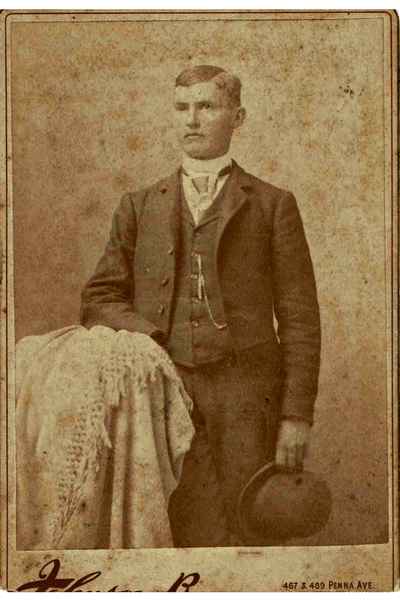
Source: Personal Collection of Lisa Lisson
Hair Styles and Fashions
Have you ever remembered when a photograph was taken of you based on your hairstyle or on the clothes you wore?
You can do the same thing with your ancestors’ photographs. Using the individual’s hairstyle and clothing style, you can estimate an approximate date a photograph was taken. Narrowing the date range a photograph was taken will narrow down the potential candidates the people can be.
The photograph below (the cabinet card from above) dates to the early 1910s. The gentleman’s hairstyle, tie and hat (in his hand) all were fashionable for the 1910s.

This photograph of Mary Elizabeth Scott (below) was taken in the early – mid-1890s. Notice the center part with the bangs. Her hair is pulled into a bun in the back. The bodice of her dress along with the narrow sleeve is also indicative of this time period.
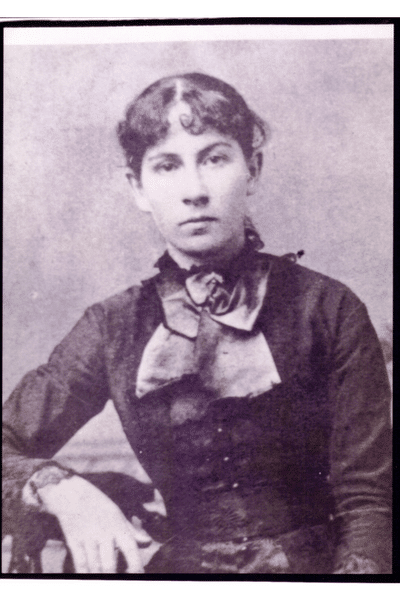
Source: Private collection of Cynthia Welcher
The photograph below is from the Library of Congress photo collection and depicts a woman from the Civil War era. She wears a typical hairstyle of the day with a middle part and the hair styled over the ears. Her full skirt and the fuller sleeves were common in the fashions of Civil War women.
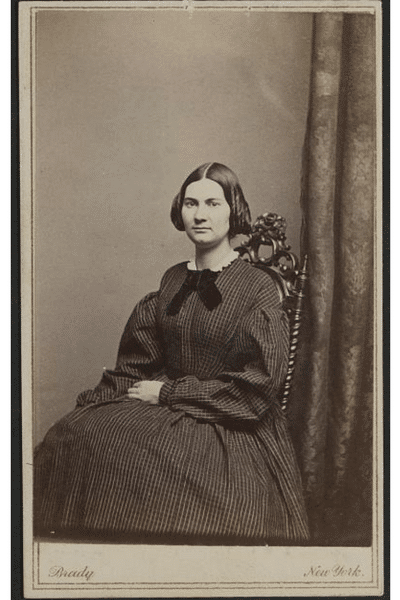
Source: Library of Congress
Where do you find examples of hairstyles and fashions from different time periods?
You can find samples of photographs in a variety of places including:
- Godey’s Lady Book – An early women’s magazine
- Library of Congress Photo Collection – Search for women and the particular year of interest.
- Google Images – Search for women and the particular year you are interested in.
[bctt tweet=”Use hairstyles and clothing to identify ancestors in old photos. @areyoumycousin” username=”photoorganizers”]
Now go pull out your photographs and take a closer look.
What type of photograph is it? Research the hair and clothing fashions you find. With this information, you will be able to estimate the date your photograph was taken and begin to narrow down who could possibly be in the photograph.
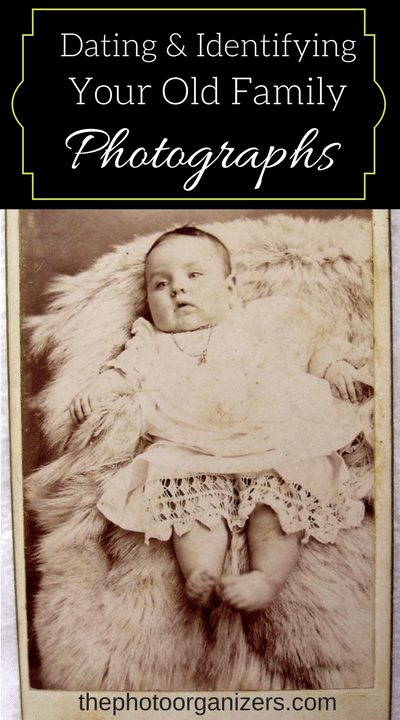
If you need help organizing and preserving your lifetime of photos, videos, and keepsakes, find a photo organizer near you at the Association of Personal Photo Organizers.
Don’t forget to grab your copy of Photo Organizing Made Easy: Going from Overwhelmed to Overjoyed from APPO founder Cathi Nelson.
Lisa Lisson is the genealogist and blogger behind Are You My Cousin?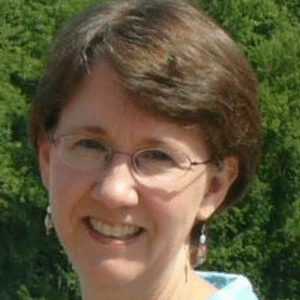 . Lisa believes researching your genealogy does not have to be overwhelming. All you need is a solid plan, a genealogy toolbox, and the knowledge to use those tools. Passionate about genealogy research and helping others find resources and tools to confidently research their genealogy, Lisa can be found at LisaLisson.com, Facebook, and Pinterest.
. Lisa believes researching your genealogy does not have to be overwhelming. All you need is a solid plan, a genealogy toolbox, and the knowledge to use those tools. Passionate about genealogy research and helping others find resources and tools to confidently research their genealogy, Lisa can be found at LisaLisson.com, Facebook, and Pinterest.

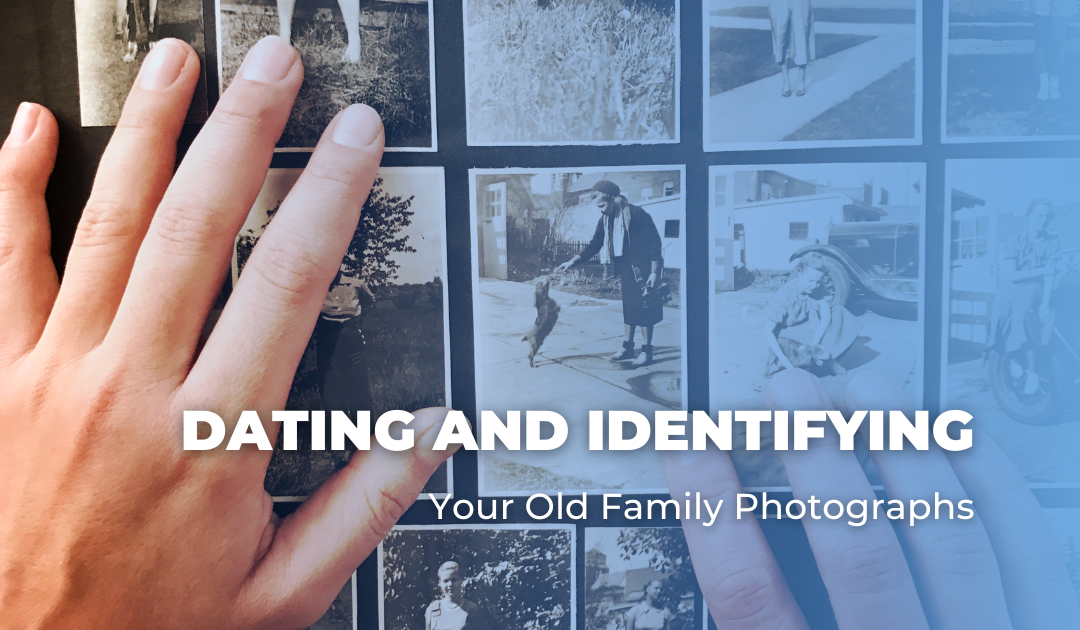
fGreat clues – but be cautious about dates! people in small towns and rural areas were often decades behind what was considered ‘fashioinable’ ; clothes passed down, hairstyles worn as a young woman may still be their style when they are in their forties.
This is a great article. Thanks! I only wish I had images as old as Daguerrotypes in my family collection. They must have been handed down to the wrong descendents (not me) if there were any at all. I need an article like this for photos from the 1940’s to the 1980’s. I’m pretty sure my unknown photos fall in that time range.
Hi please help me know the year in which this photo of our grandmother has been taken. It has been taken somewhere in Ghana, west Africa.
Thank you so much.
This is such a great article on dating old photos. I have one more suggestion – I have been successful in dating some of my cabinet cards by cross referencing the photographer in the city directory of the time period, noting what years that photographer appeared at the particular address printed on the card.
Thought you might like to see the earliest in my collection, a carte de visite taken in 1873, my great-great grandmother, Katherine Sheets Faust, age 17 (luckily for me on this one, her name and age had been written on the back).
What a great read and wonderful information. I would love any help at all with dating this painting/photograph based on clothing and/or hairstyles and would very much appreciate help or a friendly shove in the right direction.
I have no information other than it came from the “Fedrick” (aka Fredrick or Frederick) side of my family, but so far, no one recognizing anyone. It was in an antique oval frame, with “bubbled glass,” all of which is currently in the back seat of my truck headed to restoration.